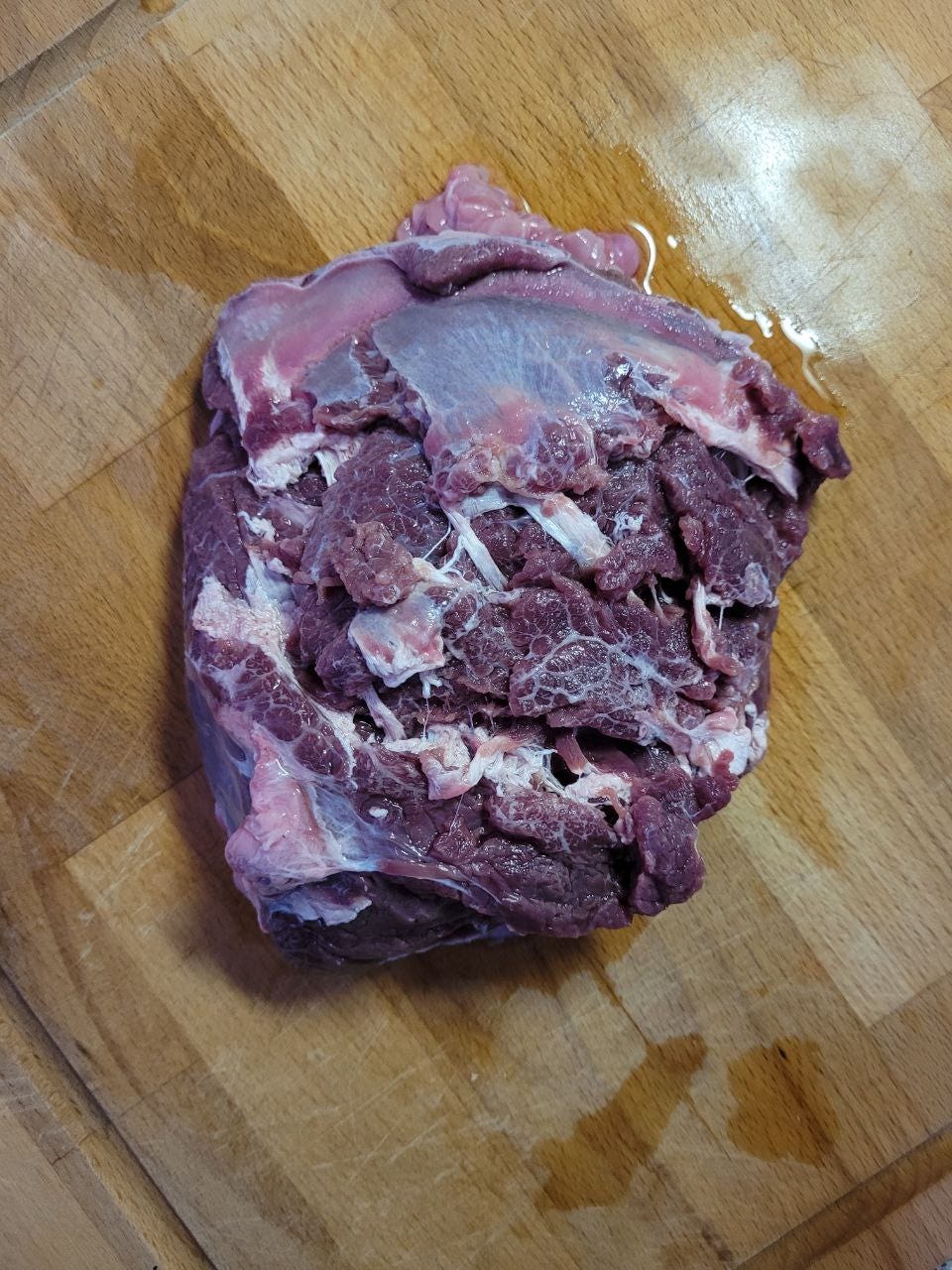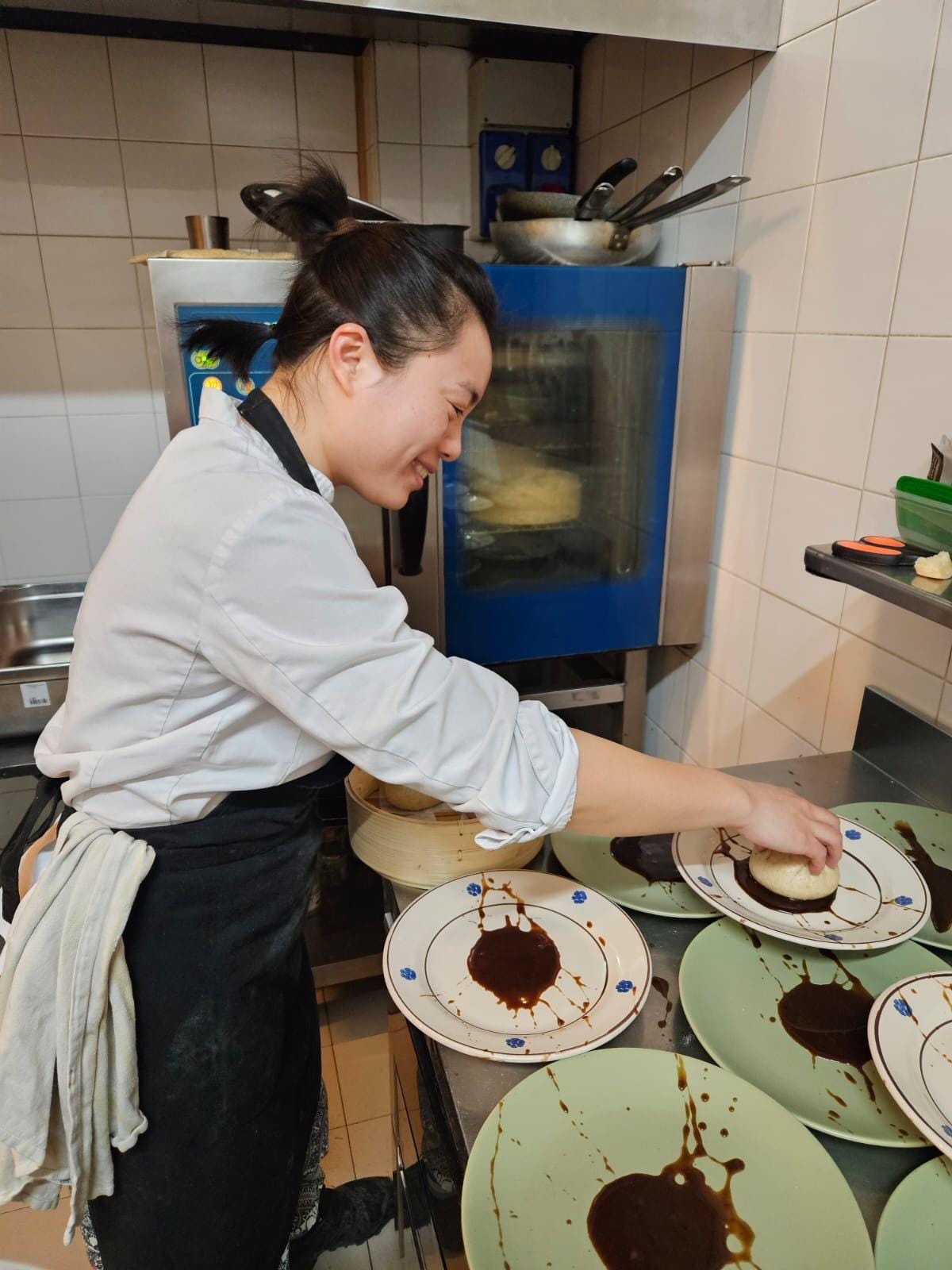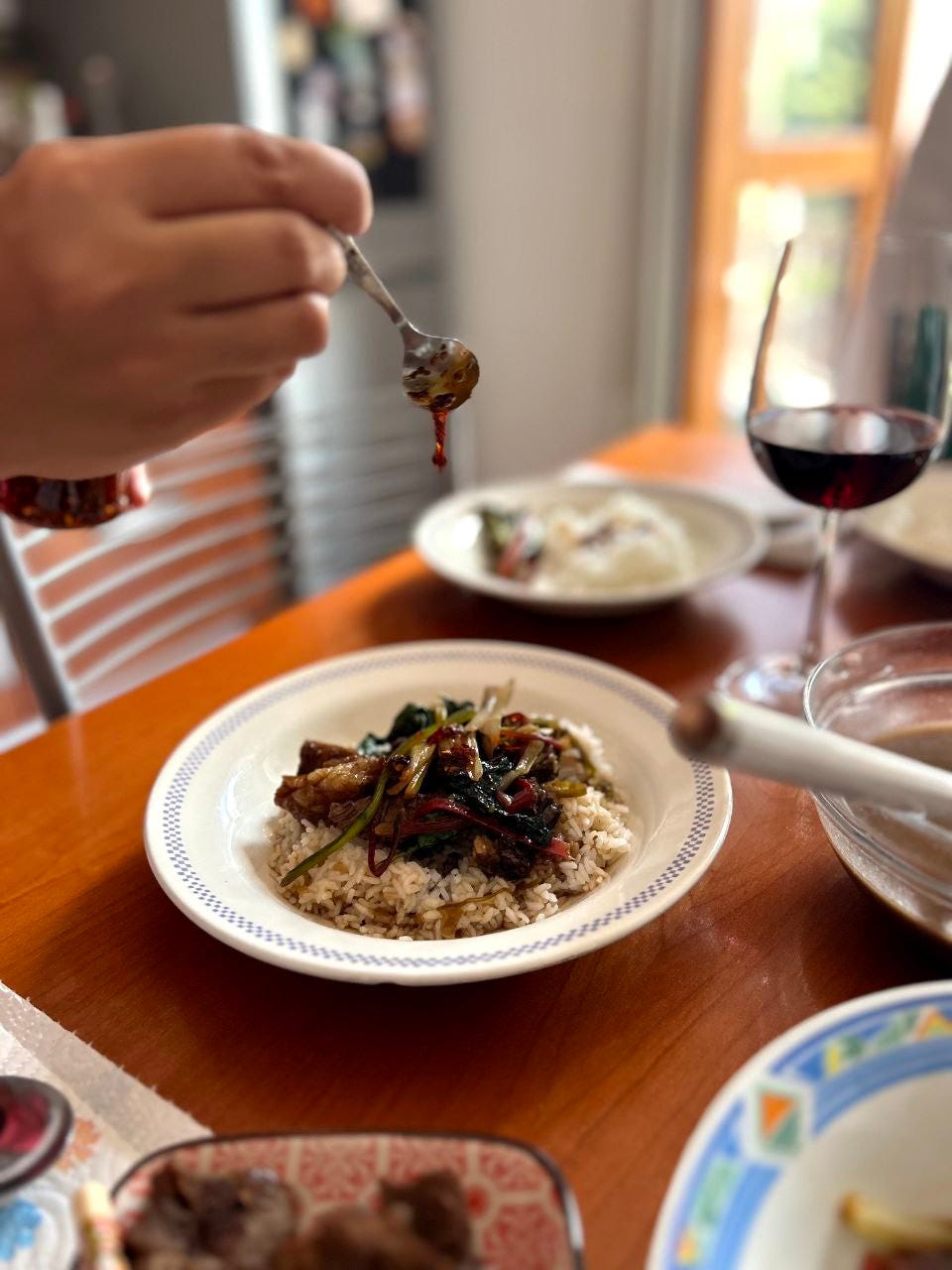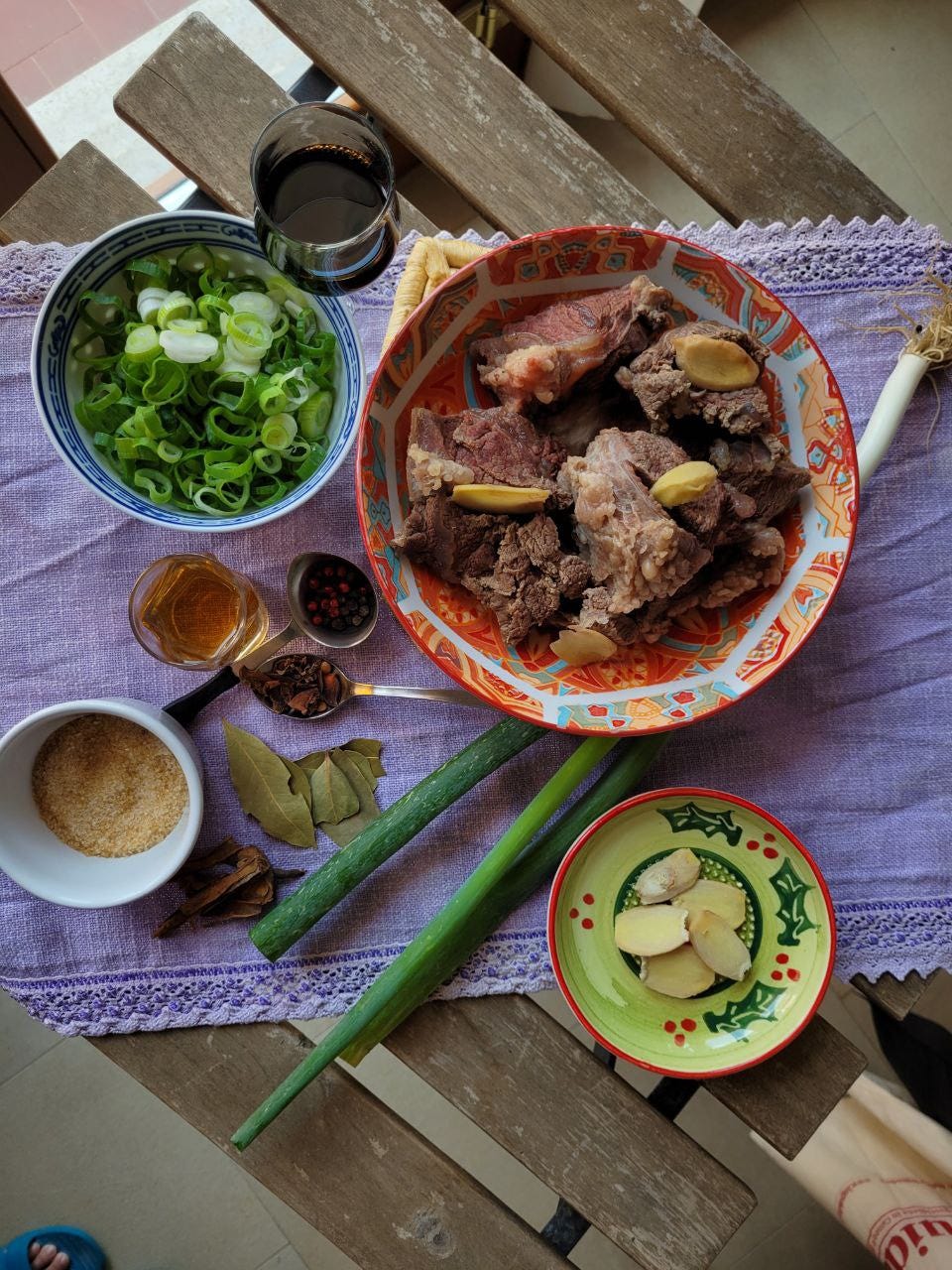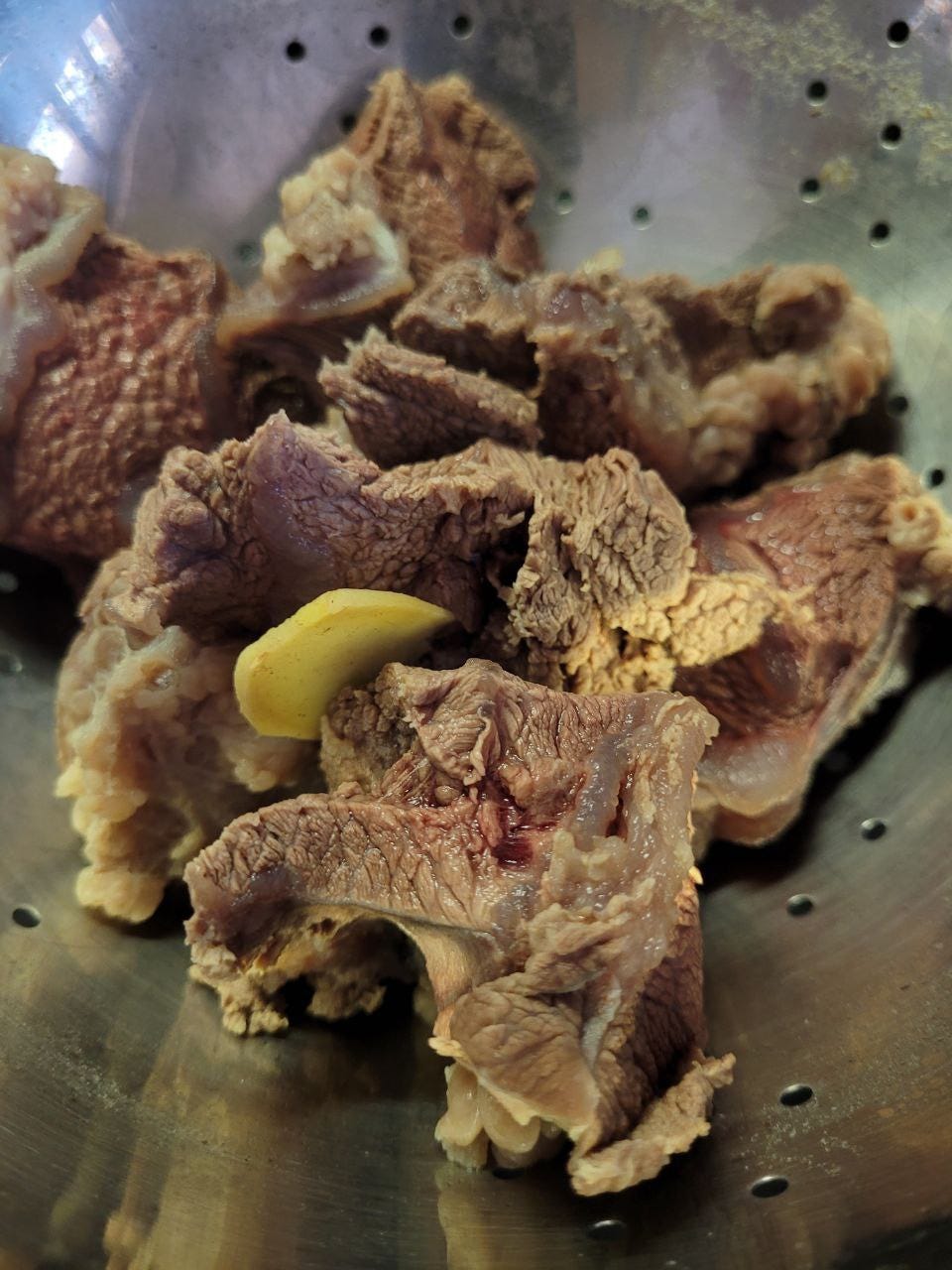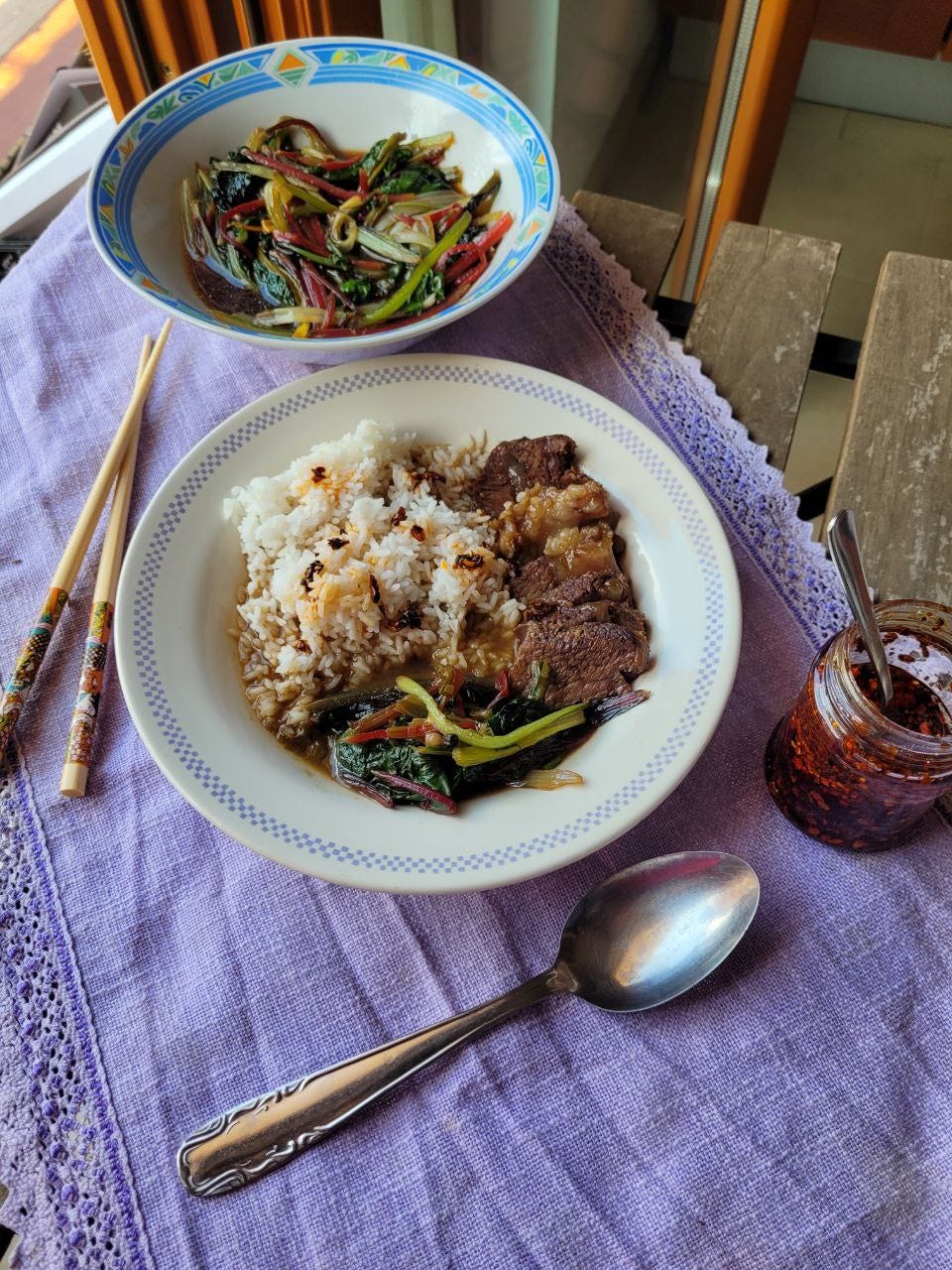Beef Cheeks
Featuring a dear friend's recipe and their work on Chinese cuisine!
Are cheeks offal? And does that mean the prerequisite for being an offal has nothing to do with muscles?
The answer to both of those very basic questions are yes. Beef cheeks are offal and yes, being an offal has nothing to do with muscles. Heart is a muscle and it’s still an offal.
For me, beef cheek was easier to handle, in terms of eating and cooking, than the heart. Beef cheeks are classified as a low-fat offal as they are facial muscles and are used quite a bit. So, when you cut into it, it can be a bit sinewy. However, if you buy it from a butcher, they will clean it out for you. But it is definitely a cut that you would likely need to pre-order as they may not stock it due to low demand.
Beef cheeks are an abundant source of collagen, so slow cooking the cheek will help you extract it out. This specific cut also gains a beefy flavour the longer you cook it, just like the heart. I mean you could use this cut to make any recipe that calls for muscle meat from other parts of the animal. And interestingly enough, when I looked around to find traditional beef cheek recipes, I couldn’t find much because beef cheeks have famously been cooked the same way they would a, for instance, a beef stew that uses braising steak. So, luckily, that just means you can one day decide to embark on a new journey to start with offal, and your starting point could be the beef cheek!
Besides, the only reason it is considered an offal is because it is a part of the animal that isn’t consumed as much, despite it being a muscle meat. Apart from collagen, it’s a good source of zinc, vitamins B12 and B3, Omega-3 fatty acids and iron. And of course, as with all meat, is a good source of protein.
Honestly, it’s a fantastic offal - gives you the gold (collagen), has great nutritional value, does not really shock you with a weird taste (‘sup, blood) or texture (howdy, brain) and most importantly, it is absolutely perfect if you want to braise it as the collagen acts like a sponge, taking in all the braising liquid, making it super moist. So moist that you don’t need forks to pull it apart. A lot of recipes have substituted their choice of beef cuts for the cheek for Birria (Mexico). If you have an Indian recipe that utilises stewing and slow cooking over a long time, consider using beef cheek!
The recipe that I did end up using for my thesis came from a good friend and former housemate, TingTing. And it was the weirdest way to become housemates: not the landlord nor the broker told her who would be joining her as a housemate or even when I will be moving in. I essentially got her number the day I moved in, texted her and she had no idea. But, either way, we had a great time and I knew had to dedicate a recipe to her!
But even beyond that, she is passionate about traditional Chinese medicine theory, practices sustainable herbal cuisine and loves sharing food with everyone! She curates weekly pop-ups at Enoteca Sardo in Bra, Italy, so if you are ever around, follow her page, TingTing’s Table and pop in for an amazing meal with some fantastic wine pairing and lively music!
Offally cheeky
I find it quite unnerving to cook a recipe that has been contributed by someone, especially from a cuisine that personally intimidates me. Also, if you are an Indian/have been in India long enough to have sampled some Indo-Chinese food, you will know what I mean. I grew up on a different version of Chinese food than what it actually is. It was only when I started studying about food on my own a little more, I learnt that we Indians just simply put our own, equally very delicious and equally deviant, spin to it. I can assure you, no Chinese person will eat Indo-Chinese and see their own cuisine reflected in it. I don’t know, I like both so much; they are both equally addictive and satisfying.
And I am glad I turned to TingTing because the recipe she gave me really helped enhance the flavour of the cheek. The cheek came to me through my good friend Emma, who was at that time working with Tenuta di Paganico in Tuscany, Italy. She came over to Bra for a day before she flew to Norway and handed me an entire beef cheek and a nice pack of beef lard with garlic and rosemary. Ah, what can I say. Sometimes my friends make me really happy.
The recipe that TingTing gave me uses aromatics that eventually put the beefy flavour of the cheek on a pedestal. Does that make sense? I started with blanching the cheek with ginger and water. That was it. It helped remove the impurities and aid in the cooking process. Then I washed it off with warm water and let it rest, covering it. This helps trap moisture into the meat.
The subtle yet pronounced flavours of this dish makes me want to cook it every time it rains. But I am yet to go scavenging for offal meat amongst the butchers of Milan.
Jiang Xiang Niu Lian Rou / 酱香牛脸肉 / Spiced Beef Cheek Stew
I had this idea while writing my thesis to name the organ in correlation to the person who sent me the recipe. Admittedly, there was only one. The liver recipe I posted was more of a tribute than an actual contribution. But this was a recipe I made very few changes to (mostly in the chili department) and kept it as it was. So I named it TingTing’s Cheek/婷婷的牛臉肉菜譜 in the thesis.
By no means is it the traditional recipe. I feel like when we venture away from our heartlands, we need to adapt to what ingredients we are and have around. From the recipe she sent me, I had to opt out the Tabasco peppers, as I couldn’t source it. But she says that Habanero works just great. Of course, I am a wimp with it comes to heat so I just left that out. But I did have a great chili oil that she made but couldn’t take it with her when she was moving. So I used that to accompany it. If you have chilies that can mimic Tabasco/Habanero, go for it!
I did not have Sichuan peppercorns with me but I substituted it for a mix of black and pink peppercorns, which I think really accentuated the beef. The recipe itself is quite nice; it’s earthy, it’s hearty and it’s warm. You can have it with rice or noodles or rice noodles! Although I am a rice girlie so I will always choose rice over noodles. For the best results, it would be best to stick to the recipe. But that’s big of me to say since I didn’t have two major ingredients and substituted with what I could.
What you’ll need:
Beef Cheek - 400gms; cut into big pieces to help in the blanching process. But you do you!
Star Anise - 2pcs whole, and if it’s broken then like 2tsp worth of broken star anise bits
Fresh Ginger - 10 sliced pieces, but don’t worry if you end up with like 12-14 pieces too. Ginger is always good!
Bay Leaves - 4pcs, ideally small leaves. But if you have bigger ones, 2 big leaves will do!
Sichuan Peppercorn - 2-3gms
Cinnamon - 2pcs, and don’t worry if it’s broken!
Crystal Sugar - 20gms
Fresh Tabasco Pepper - 15-20 pieces. But if you’d rather use Habanero or something similar, who am I to stop you?
Cooking Alcohol - 2tbsp
Soy Sauce - to taste. Please note that there is no salt in this recipe. So if you do plan to use salt, measure out your soy sauce accordingly
Spring Onion - 1 entire stalk. But more if you really like the taste.
What you need to do:
If your beef cheek isn’t cut, this would be the time to do it. Try to get even pieces to achieve uniform cooking. Once you have your desired pieces, wash them once under running water. Bring a pot of water to boil, add around 4-5 pieces of those sliced ginger and let it come to a rolling boil (or when you see bubbles forming on the inside).
Add your beef pieces and blanch it. Now, you don’t want to keep it for too long. This process is to eliminate any and all impurities and add a nice ginger flavour to the meat. I blanched mine for a good 15 minutes before taking it out of the water. Once you take it out, wash it with warm water and set it aside, covering with a lid.
While the beef rests, get your mise en place ready. Which means get your spices out, the aromatics, measure out the sugar, find that cinnamon stashed at the back of your spice cupboard, cut your spring onions, figure out which pot you will use. This ensures a smooth cooking process and will not overwhelm you should things go a little out of order.
On low heat, add oil to your pot. Always remember to cook on low or medium-low heat. It ensures even-cooking and adds more flavour to the dish. Add the spring onion, star anise, cinnamon sticks, Sichuan pepper, the remaining ginger and bay leaves. Give it a good stir until you can smell the aroma of the spices. This means you have successfully extracted the flavour into the oil.
Gently add the beef cheeks and the cooking alcohol. Give it a nice stir. Since it’s on low heat, the beef will release water. Let it cook for five minutes. While this is going on, boil water in another pot.
If the beef has released water and it has evaporated, add soy sauce and give it a mix. Once the water starts to boil, add it to the beef. Add enough water to ensure everything is submerged or you will have beef pieces that will be dry.
Add your tabasco peppers and sugar.
Switch the heat to high and wait until the dish comes to a boil. Once you can see the rolling boil, switch back to low heat. Cook for the next 2 hours or depending on your desired texture. The water will start reducing on its own.
Once it has been cooked, you can slice it and serve it with rice and the sauce reduction.
You can also use this beef to make stir fry with bell peppers and garlic!
But like I said, you can use beef cheek to make anything. You wanna have a steak and potatoes night? Go for it. Wanna make a classic Italian Ragù? Use beef cheeks! Wanna go all Mexican and make Birria? It has been tried and tested that beef cheeks can be a good alternative! The collagen, like I mentioned earlier, will do all the work for you!
If I had to choose muscle meat that I could be stuck to for the rest of my life from a bovine? I would choose the cheeks. They not only lend their own fantastic flavours but also soak in so much of the aromatics you’d use in creating the dish.
Have a beef cheek recipe you’d like me to cook? Let me know and I will feature you and your work!


